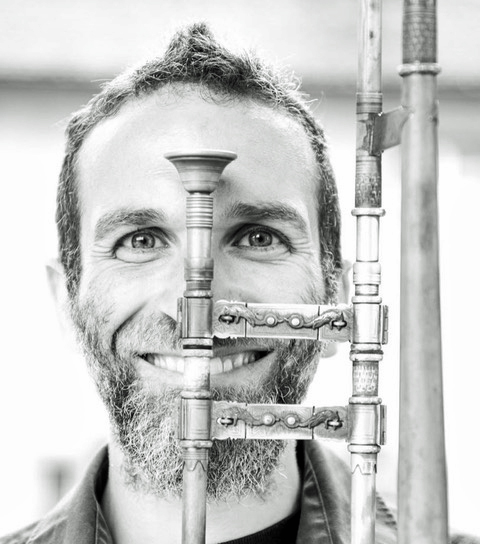La Spagna - the story of the bassadanza and basse danse
(Adam Bregman)
Captivated by the enigmatic bassadanza and basse danse, scholars and performers have taken great pains to interpret, imagine, theorize, and recreate the performance practices of this lofty form of fifteenth-century court dance for over a century. But missing pieces of the puzzle have led to holes in our understanding of this genre, including the correlation of the choreographies to the accompanying music and regional peculiarities. This owes in part to the fact that, while two related, contemporary, Franco-Burgundian sources survive with music and choreographies, every other dance manual or collection contains choreographies or music at best. And a comparison of these sources presents a variety of musical or choreographic styles for which it hardly seems plausible to label with a single denomination—“basse danse” or “bassadanza”—especially looking further into the sixteenth century. There is one dance, La bassa di castiglia, or La Spagna, however, that has left a trail of music and choreographies throughout Renaissance sources—the only dance to survive in both Italian and Franco-Burgundian dance manuals, and with several contrasting choreographies and nearly 250 different musical settings—that marvelously come together to depict the evolutionary arc of this genre. Using this uniquely important dance, my paper tells the story of the extraordinary life of the basse danse and bassadanza in music and movement across time periods and geographic regions.
Adam Bregman, Basel, Schweiz
 Adam Bregman is a trombonist, musicologist, and pedagogue whose performance, research, and teaching focuses on the late Middle Ages, Renaissance, and early Baroque eras. Adam strives to share his love for music of the past and his avid interest in historical performance practices playing historical trombones from every era, presenting his research, and working with musicians of all ages and abilities who share the same passion. His experience has led him to develop an approach to all areas of his musical work that inextricably combines practice and theory—engaging with music on its own terms—and adds insights from other disciplines. This working method pervades his teaching and his research, which focuses on the performance practices of wind musicians in the Renaissance and court dances of the fifteenth and sixteenth centuries. All while maintaining the highest level of artistry on stage, as co-director of Basel-based historical wind ensemble Capella Helvetica or performing with such European and North American ensembles as Oltremontano
Adam Bregman is a trombonist, musicologist, and pedagogue whose performance, research, and teaching focuses on the late Middle Ages, Renaissance, and early Baroque eras. Adam strives to share his love for music of the past and his avid interest in historical performance practices playing historical trombones from every era, presenting his research, and working with musicians of all ages and abilities who share the same passion. His experience has led him to develop an approach to all areas of his musical work that inextricably combines practice and theory—engaging with music on its own terms—and adds insights from other disciplines. This working method pervades his teaching and his research, which focuses on the performance practices of wind musicians in the Renaissance and court dances of the fifteenth and sixteenth centuries. All while maintaining the highest level of artistry on stage, as co-director of Basel-based historical wind ensemble Capella Helvetica or performing with such European and North American ensembles as Oltremontano
(Belgium) and Ciaramella (Los Angeles), Adam endeavors to instill his fascination with early music in modern audiences. Whether in the form of musical strains or words, he strives to contextualize the music of the past by telling a story so that, through music, we may better understand our cultural history, ourselves, and the ever-changing world around us.
(Photography: Cécile Mansuy)

